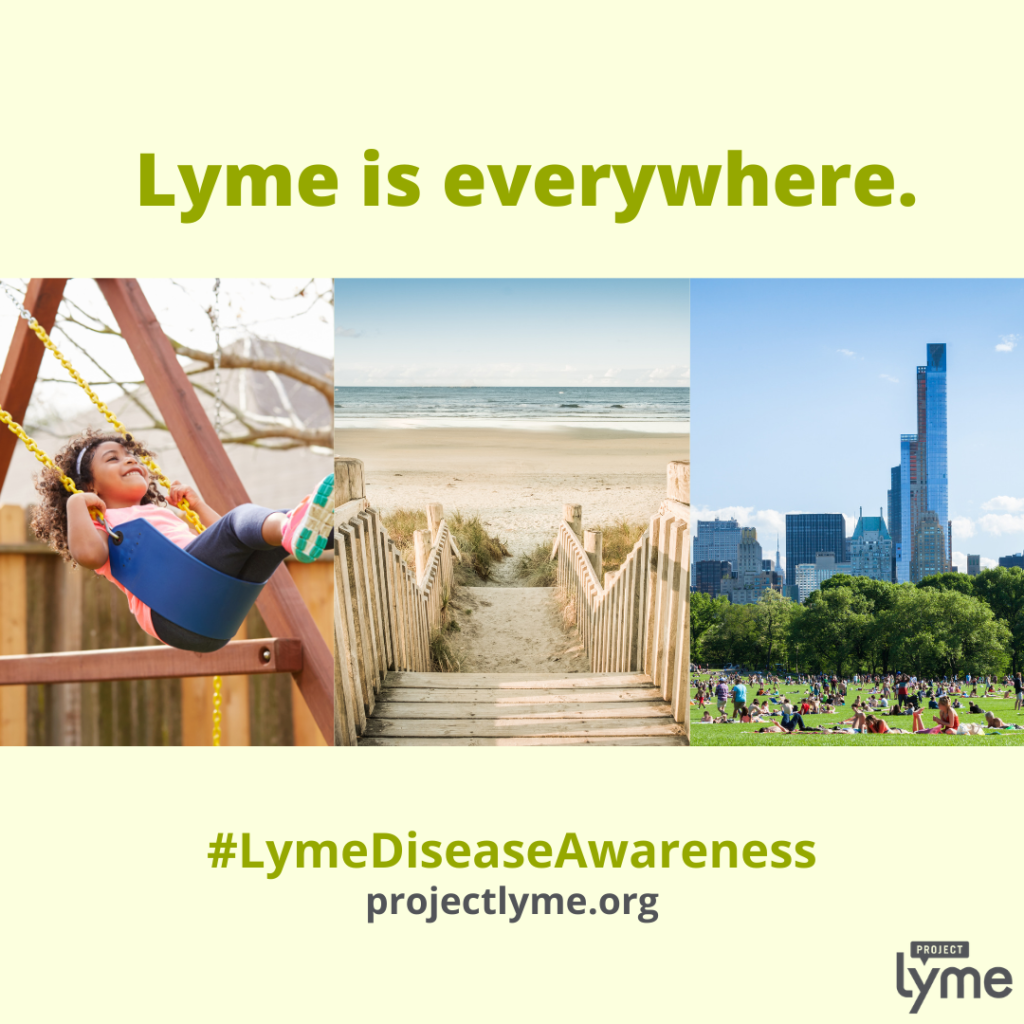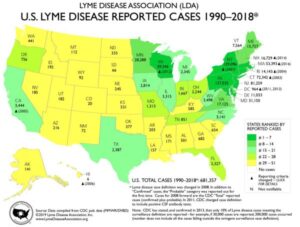Other Tick Borne Diseases
Where Can You Get It?
Lyme is not specific to one area of the country, or even the world. Understand the surveillance data so you can be aware of the locations that pose a threat.


Where is Where?
There is a general misconception that you can be bitten by an infected tick only in “endemic” regions, such as wooded areas in the Northeast. Not only is this inaccurate, but it is a dangerous fallacy. In fact, ticks have continued to expand their geographic range because of changing climate conditions which have increased their habitats, as well as the habitats of their hosts. You can be infected by a tick in almost every biosphere on the planet, from woods and beaches, to urban areas, and even your own back yard. For example, a recent study done in California, by our partner Bay Area Lyme, shows evidence that the Lyme-causing bacteria Borrelia burgdorferi has similar occurrences in coastal scrub (4.1%) as in woodland areas (3.9%).
Additionally, there is still more research to be done. Health and Human Services recently released their 2020 Tick-borne Disease Working Group Report to Congress. In the report, they acknowledge the current insufficiencies of surveillance data and complementary tick management strategies. For this reason they have recommended the implementation of “multi-agency, ecologically-based One Health efforts… that promote research and enhanced vector surveillance to identify and validate integrated tick management in keystone wildlife hosts… and the sustainable management of their populations” with the purpose of lessening the strain tick-borne diseases have on public health.
Project Lyme encourages you to stay aware and up to date on tick locations and prevention strategies so that you can keep yourself and your family safe.

Where is it Concentrated?
The highest concentrations of Lyme disease occur in the East Coast, Midwest, and West Coast states, but it’s present nationwide, including the South. Ticks are also present on all seven continents. The map below is based on the Centers for Disease Control and Prevention (CDC) numbers which are based on CDC’s surveillance criteria. The CDC reported numbers for Lyme disease are said to represent about 10% of actual cases that occur each year. To view the full interactive case map click here.
This map is courtesy of Lyme Disease Association, Inc.

When Can You Get It?
Ticks are most mobile during the warmer months of the year, usually May through November. But they will remain active in winter months when temperatures rise above freezing. Ticks reside in wooded areas, piles of leaves, overgrown grass, brushy areas, and on animals. It is also important to notes that ticks can make their way into public parks and even your backyard.
But not every blacklegged tick or deer tick carries Lyme disease. The percentage of ticks infected varies widely, depending on geographic location and proximity to tick habitats. However, maps showing the prevalence of Lyme throughout the U.S. lack a high degree of reliability because they are reported based on surveillance case definitions.
What is Surveillance Data?
Surveillance case definitions are used to set up criteria to report diseases through established channels. For example, potential Lyme disease cases are reported by state and local healthcare providers and laboratories. Confirmed and probable cases are then reported to the Centers for Disease Control and Prevention (CDC). However, there’s a caveat: The CDC estimates only 10% of actual cases are ever reported in the first place, making the annual incidences significantly higher and much more challenging to track accurately.
Perhaps, a better predictor of the prevalence of Lyme in the U.S. is the canine map. Dogs and humans often interact in the same spaces, and veterinarians regularly screen for tick-borne diseases at annual checkups and track results as part of awareness efforts by the Companion Animal Parasite Council (CAPC).
If you view a canine map, you’ll notice dogs are being exposed to Lyme outside of what’s long-been considered endemic areas, lending further credence to the data showing Lyme has spread throughout the U.S.

